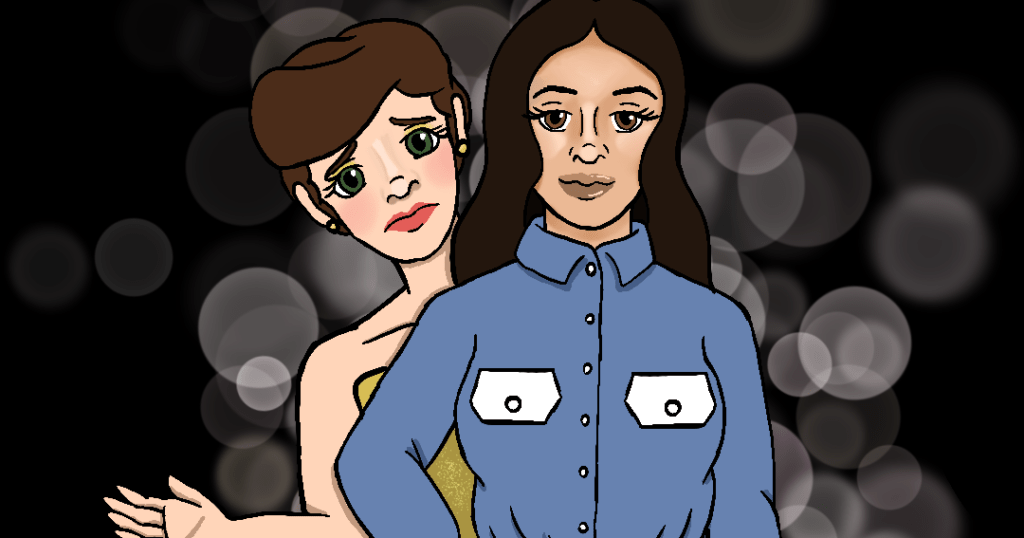Celebrities and fashion have gone hand in hand for years in Hollywood and fashion industries. Fashion as a concept and business relies heavily on setting trends to sell clothes. Similar to how brands will jump onto social media trends to garner attention from a target audience, some brands will use high-profile stars to sell clothes or garner attention. Brands like Prada, Christian Dior and Valentino use this kind of trend strategy to reach a wider range of people due to a celebrity’s high fan base.
This method of promoting clothing lines has existed for a long time. The greatest example of this is Marilyn Monroe’s influence that helped change women’s style and fashion in the ‘50s. From tight-fitting dresses to the introduction of jeans, the Hollywood star took new designs and catapulted them into fashion markets.
While using public figures to sell a trend to fans is still beneficial, fashion brands are often left in the shadows of these individuals.
Consumers, fans and the media are paying less attention to what is worn and more to who is wearing the pieces. Fashion and Hollywood collaborations feel less like brand promotion and more like extra attention for celebrities. This is at least true for haute couture, also known as high fashion, due to the fact most news and social media coverage chooses to focus on celebrities and their involvement with fashion, as opposed to the success of the companies’ new designs.
In past decades, the partnership between celebrities and clothing brands was equal. High-profile individuals would still dazzle red carpets with extravagant gowns, suits and a variety of other outfits, while fashion enthusiasts adored brands for their new and intricate designs.
Examples of this kind of collaboration include Jennifer Lopez sporting a stunning Versace gown at the 2000 Grammy Awards, Halle Berry flaunting an Elie Saab dress at the 2002 Oscars and Angelina Jolie gracing the 2004 Academy Awards with a silk Marc Bouwer dress.
However, more recent celebrity partnerships go beyond showing off the designs. Now, influencers and traditional celebrities have become ambassadors for popular brands, such as Florence Pugh for Valentino and Zendaya for Louis Vuitton. This isn’t to say famous people shouldn’t promote fashion companies. It can be beneficial for the company involved, but often these celebrities are highlighted more than the brands, and fashion becomes less admired.
One of the reasons the partnership between high fashion and celebrities works so well is because many famous people, especially A-listers, have a massive following and influence most people don’t have. This kind of influence enables celebrities to promote themselves and the new designs and clothes that otherwise might slip by people.
With the rise of social media platforms like TikTok and Instagram, the overbearing presence of celebrity and influencer coverage in fashion has disrupted the industry and distracted the media. Hollywood has infiltrated the fashion industry’s Big Four events: Paris Fashion Week, New York Fashion Week, London Fashion Week and Milan Fashion Week. Celebrity attention overshadows these exhibits and distracts from the actual show, but it could be one of many reasons critics have highlighted the absence of eccentric and new designs on the runways.
These events are meant to display new styles from designers and for various brands to compete with and promote clothes that are unique, fresh and revolutionary.
In the past, fashion shows and events did just that. This was the case at the 1973 fashion battle at Versailles that took place during what is arguably the industry’s most revolutionary time. The fashion battle set up a heightened competition for designs and pitted some of the best designers from the United States and France against each other, including Halston, Oscar de la Renta, Yves Saint Laurent, Dior’s Marc Bohan and Hubert de Givenchy. Not only was this competition and event a way to introduce some of the new designers on the scene, but it changed fashion on a worldwide scale.
This event took place during a time in fashion’s history that is unlike the current era of fashion.
Designers at the center of these shows often seem like a distant memory. Events like Paris Fashion Week and New York Fashion Week, which were made to elicit new waves of designs from the biggest brands, now feel disconnected from the original idea and from any media that would solely focus on the designers. So much of the publicity from current fashion shows is about celebrity scandals and drama that dominate the events.
Many A-list celebrities, including various Kardashians, attend the Big Four fashion shows, and their presence at these exhibits has left very little attention for the actual display. This was prevalent last year at Prada’s fall and winter menswear collection show, where the most talked about aspect was Jeff Goldblum’s involvement in the closing event due to his iconic actor status.
Once again, a celebrity overshadowed the actual designs and events.
The current relationship between fashion and celebrities is drowning out style coverage. It’s time for the media to take the focus away from the A-listers and bring it back to the designers. These showcases were never intended to be a fanfare about who would be there. Instead, they were meant to get the fashion world and its enthusiasts excited about the new collections.
Fashion needs to rewind to when exhibits were less of a popularity contest and more of a fashion spectacle — when iconic fashion designers and their inventive pieces were at the center of the scene.

